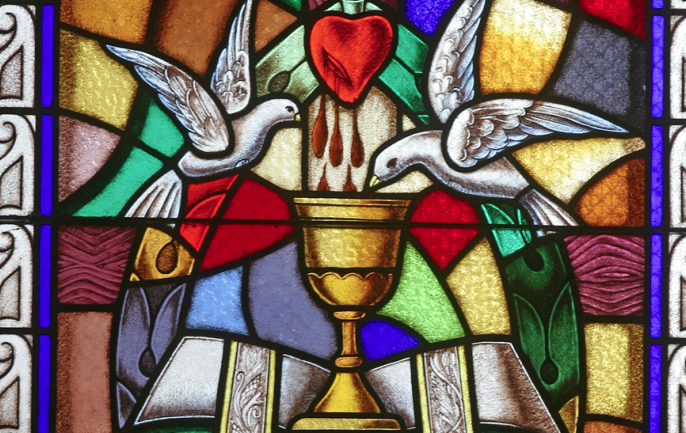
Pat Gohn
Transitions … they are so much a part of our Catholic life. As we come to December, we experience the transition from fall to winter. Liturgically we move from the month of saints and souls in Ordinary Time to the first days of Advent in a new Church year — and eventually to Christmas.
An important catechetical task is liturgical education — catechesis dedicated to promoting the knowledge and meaning of the Church’s liturgy, including the Mass and Eucharistic devotions, and the seven sacraments.
The sacraments mark the most sacred transitions — indeed, transformations — that we undergo!
Baptism offers us new life in Christ and a new identity as children of God. And each sacrament that follows it brings new graces for growth to our life lived in faith.
In the Eucharist, we find the most profound transformation — bread and wine transubstantiated into the Body and Blood, Soul and Divinity, of Jesus Christ. In receiving the Eucharist, we experience the closest communion with Jesus that is possible. The classic hymn “Panis Angelicus” contains the teaching of St. Thomas Aquinas that captures our imagination: We are fed with “the bread of angels,” heavenly food. (Speaking of hymns, read Kate Daneluk’s article on “Music and Eucharistic Adoration.”)
Two longer features will help you appreciate the gift of liturgical education:
- Timothy O’Malley writes on “The Importance of Liturgical Orientation in Catechesis,” using the example of the Catechesis of the Good Shepherd. Tim writes:
It is essential to all catechesis that it include embodied practice grounded in the liturgy. For example, we should pause regularly in our work to bid those being catechized into Eucharistic adoration. We should adapt the Liturgy of the Hours for domestic practice, teaching our families to kiss icons and chant hymns of praise. We should do parish-wide catechesis — not merely in stuffy basements with recorded videos of nationally renowned speakers, but by praying together in churches where there is singing and preaching alike.
- Marc Cardaronella instructs us on why catechesis ought to be liturgical — complete with lesson guidelines to accomplish that. His piece, “Liturgy is Catechetical” is so practical:
Many of the prayers used for celebrating sacraments are catechetical lessons in themselves. For example, the Blessing and Invocation of God over Baptismal Water from the Rite of Baptism recounts all the times in salvation history God used water for saving purposes, such as the flood and the parting of the Red Sea. You can explain the theology of Baptism using these Old and New Testament symbolisms.
Wishing you blessed holy days ahead!
Pat Gohn, MA, is the editor of Living Faith
This article was originally published in Catechist magazine, December, 2017. It has been modified to fit this format.
Image credit: Zvonimir Atletic / Shutter Stock




